The 12 Jyotirlingas: The profound significance of the 12 sacred jyotirlingas lies in their association with the lord shiva and the belief in their divine power and importance. The twelve jyotirlingas hold a high importance in Hinduism by symbolizing the power of almighty shiva where each jyotirlinga represents a manifestation of lord shiva’s cosmic light. Visiting these sacred jyotirlingas is considered as a journey towards the spiritual blessings and enlightenment.
The vedas that describe these Jyotirlingas associate each jyotirlinga with Shiva’s sacred deeds and manifestations, enriching the divine significance of these holy places. The 12 jyotirlingas embody the cultural heritage of India beyond just the religious importance by attracting visitors and devotees from across the diverse background in a common quest for spiritual peace.
Devotees believe that worshiping these holy 12 jyotirlingas bring liberation from worldly sufferings, fulfilment of desires and ultimate salvation. The reason behind this fame and faith lies in the stories written about these jyotirlingas in the sacred vedas and puranas. It is said that lord shiva himself visited these sites to manifest each of these lingas. These jyotirlings means pillar of light and the pillars represent that there is no ending or beginning.
All the stories related to these 12 jyotirlingas are very popular and are believed to be true by most of the devotees due to which they travel from long distance to take blessing from the lord at these places. Let us know more about each jyotirlinga and its historical significance in the hindu mythology in detail.
Exploring the 12 Jyotirlingas of Lord Shiva – Significance & History

There are 12 jyotirlingas located across India, each holding its own importance and historical significance. Here is the list of 12 jyotirlingas and their locations in India.
- Somnath Jyotirlinga – Located in the Prabhas Patan , Gujarat
- Mallikarjuna Jyotirlinga – Located in Srisailam , Andhra Pradesh
- Mahakaleshwar Jyotirlinga – Located in Ujjain, Madhya Pradesh
- Omkareshwar Jyotirlinga – Located in Mandhata, Madhya Pradesh
- Kedarnath Jyotirlinga – Located in Himalayas, Uttarakhand
- Bhimashankar Jyotirlinga – Located in Sahyadri, Pune, Maharastra
- Kashi Vishwanath Jyotirlinga – Located in Varanasi city, Uttar Pradesh
- Trimbakeshwar Jyotirlinga – Located in Nashik, Maharashtra
- Vaidyanath Jyotirlinga – Located in Deoghar, Jharkhand
- Nageshwar Jyotirlinga – Located in Dwaraka, Gujarat
- Rameshwar Jyotirlinga – Located in Rameswaram, TamilNadu
- Grishneshwar Jyotirlinga – Located in Ellora, Maharashtra
https://www.instagram.com/reel/C4IfAYgpxGq/
Somnath Jyotirlinga:
According to the hindu mythology the Somnath story tracks back to the churning of the cosmic ocean, also known as samudra manthan. It is said that while the gods and demons are vying for the nectar of immortality, a potent poison emerges that is about to consume all existence, When the gods sought for refuge in almighty shiva, who drank the poison, saving the universe but turning his throat blue in process. In return to this sacrifice, the gods built a lingam that symbolizes the divine presence and protection of lord shiva.

The most prominent chapters of Somnath is its repeated destruction and reconstruction. In the 11th century, it is said that a famous Afghan ruler launched a series of raids on Somnath razing the temple to ashes, yet it was raised from the ashes and was rebuilt by devout rulers.
Hence, Somanth Jyotirlinga stands as an enduring power of faith, eternal presence of divine and resilience of the human spirit. As the first among 12 jyotirlingas, the Somnath jyotirlinga beckons the pilgrims and seekers on the journey of transcendence, divine communion, self discovery by guiding them towards the inner truth.
Mallikarjuna Jyotirlinga:
The origins of Mallikarjuna jyotirlinga traces back to the sacred puranas where it is intertwined with the celestial wedding of the almighty lord shiva and goddess Parvati, it is a symbolization of harmonious balance of feminine and masculine energies in cosmos.
The significance of Mallikarjuna lingam is that lord shiva chose the sacred Srisailam as venue for his marriage by adorning himself with mallika flowers, hence this site is considered as a holy site where the divine union of lord shiva and goddess Parvati took place.
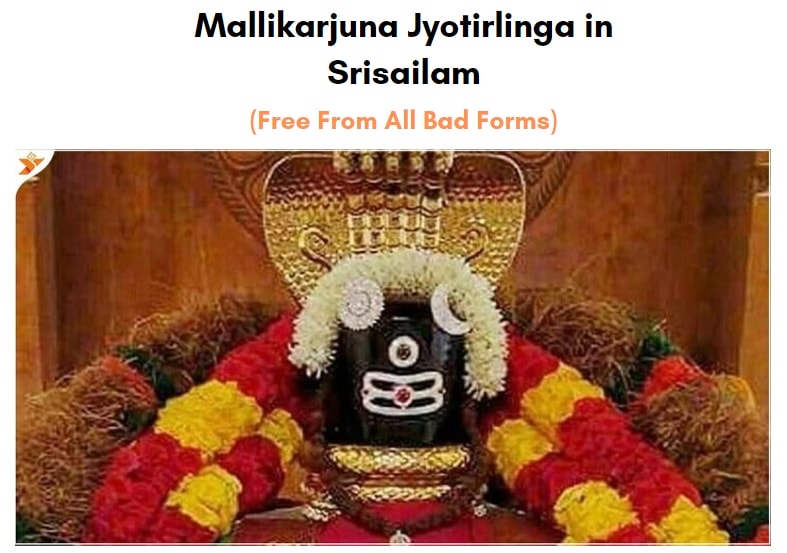
The prominent chapters of Mallikarjuna jyotirlinga is its spiritual sanctity and blessings, the temple is known for its sacred waters that are believed to possess the divine blessings and healing properties by curing the ailments, purifying the soul. Devotees from across the world visit Mallikarjuna jyotirlinga to take dip in its holy waters and seek the benevolence of lord Mallikarjuna.
Apart from the spiritual sense the temple is also famous for its rich and vibrant cultural atmosphere where spiritual activities, discourses celebrating the rich tapestry of India’s heritage take place
Mahakaleshwar jyotirlinga:
The story of the holy Mahakaleshwar jyotirlinga is linked with the cosmic dance of the lord shiva, which is known as the Tandava Nrithya. Legend has it that the Tripurasura, a demon king has tried creating chaos and darkness upon the universe, in response all the gods seeked help of lord shiva to vanish the demon. Considering their prayers, lord shiva took the form of Mahakali, and unleash his wrath on to Tripurasa, destructing him to ashes.

This marked a supreme incident of lord shiva being the protector of his devotees and saving the world from the demonic energy and is mentioned in several vedas and other spiritual writings. In order to symbolize this divine victory, lord shiva manifested as a jyotirlinga representing his eternal peace and authority over destiny and time. The temple is filled with exquisite carvings, architectural marvels and sculptures that speak of the devotion and artistic supremacy of the culture. Bhasma Aarti is a famous ritual done at the Mahakaleshwar jyotirlinga and millions of devotees attend the aarti every year which takes place on occasional days at 4:00 am.
Omkareshwar Jyotirlinga
The holy Omkareshwar temple is derived from two words “Om ” and “Ishwar”. Om means the sacred sound of the universe and the spiritual icon in the hindu mythology whereas Ishwar means another name for lord shiva. Thus, the Omkareshwar temple signifies the presence of divine energy of the almighty lord shiva in the form of the syllable “Om”.
The significance of Omkareshwar jyotirlinga lies in its association with numerous legends and stories. It is believed that the king Madhata, performed severe austerities and penance at this site to seek the blessings of lord shiva.
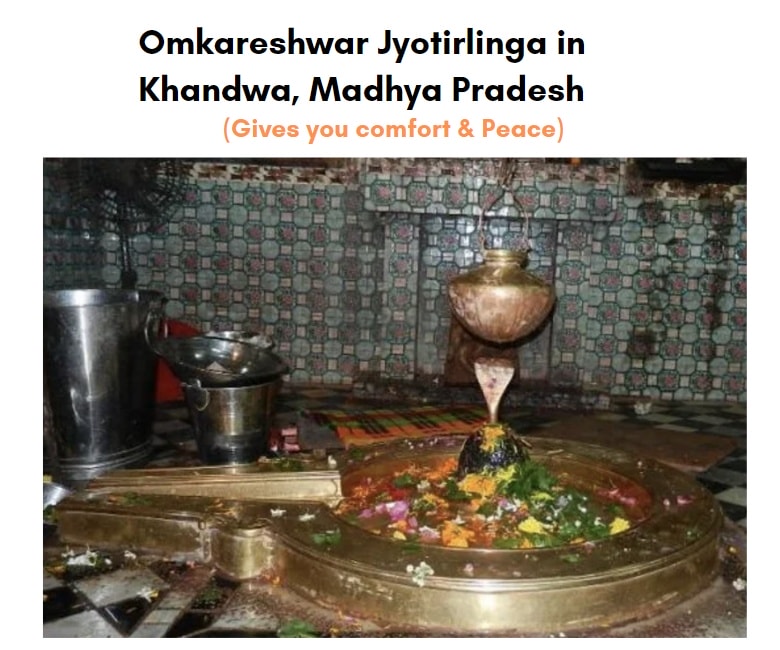
Being pleased by the king’s devotion lord shiva appeared and granted him the boons he wished for and since then this site is recognised as the sacred place. Apart from the divine history the Omkareshwar temple is also famous for its geographical location which is situated on an island in river Narmada and is surrounded by the natural beauty and lush greenery. The Narmada river is often referred to as the healing river as it has the curing properties. These all together has made the Omkareshwar jyothirlinga one of the holy pilgrimage places for the devotees across the world.
Kedarnath jyotirlinga:
Kedarnath jyotirlinga is a must visit site, surrounded by the scenic snowy mountains, valleys with lush greenish meadows. The history of Kedarnath dates back to the 7th century AD where it is mentioned in skanda puranas, it is believed that the present structure of the temple was constructed about 1200 years ago by Adi shankaracharya and is renovated several times over centuries.
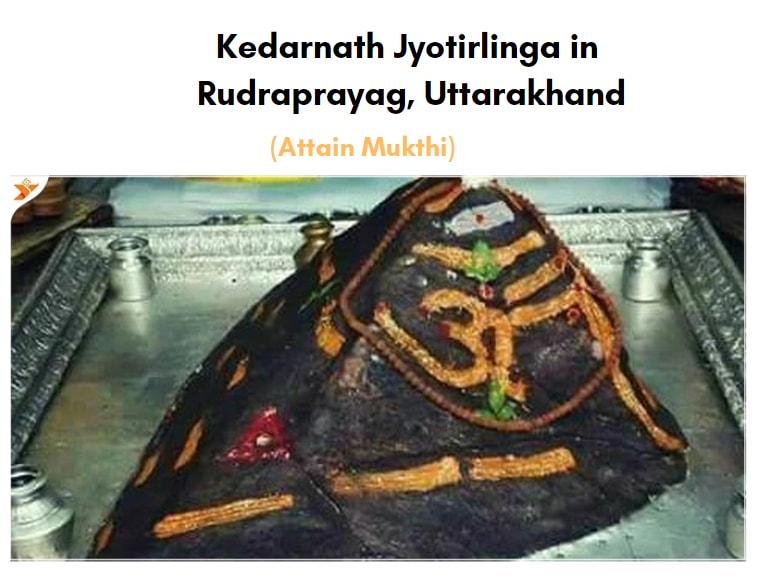
The Kedarnath temple is built with massive stone slabs on a rectangular platform and has figures of different deities from the hindu mythology on the walls of the temple, in the front there lies a large statue of Nandi bull, which represents a guard for lord shiva. Reaching Kedarnath temple includes a little trekking as it is situated on the high altitudes.
It is adviced to carry required accessories while planning your trip to Kedarnath. Every year millions of devotees visit this pilgrim site during the Maha Shivaratri festival. The Badri kedar festival is a famous celebration held every year in the month of june and is celebrated for over a week.
Bhimashankar jyotirlinga:
Bhimashankar temple is famous for its Vishwakarma sculptors and other structures such as shikara which were added by the Maratha empire in the 18th century. The story behind the Bhimashankar jyotirlinga is that a demon named bhima has done immense prayer to lord brahma to bless him with immense power and after receiving the blessings from brahma he planned to take revenge on lord vishnu who destroyed his father.
In order to do that he has imprisoned a devotee of lord shiva and forced him to pray to him instead and when the devotee refused he has raised his sword to destroy the shiva linga. That’s when almighty has appeared and destroyed the demon to ashes.
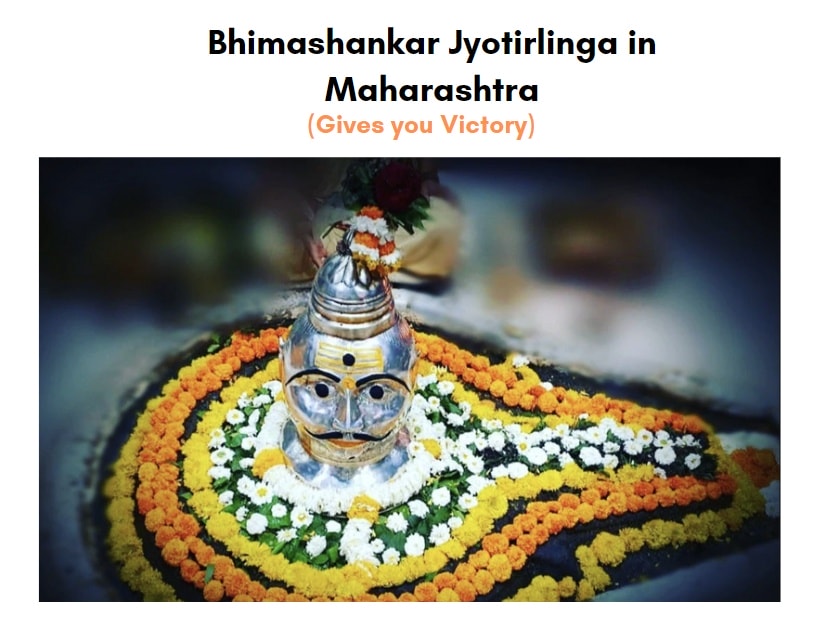
The site where the lord shiva has appeared is known to be a manifestation of Bhimashankar jyotirlinga. The temple is famous for its wildlife and is also declared as a wildlife sanctuary. It is located in the forest area and the required measures are taken as it is a pilgrim area where millions of devotees visit every year for the eternal blessings.
Kashi Vishwanath Jyotirlinga:
Kashi Vishwanath Jyotirlinga is mentioned in the Puranas, it dates back to 1194 AD, when it was re-built by many rulers after being demolished by many invaders in the past centuries. The story of the Vishweshwar temple is related to goddess Parvati where she requested to make a suitable place for her family in Kashi. Goddess Parvati was so pleased with the stay that she offered food to everyone and worshipped as goddess Annapoorna, it is said that even the lord shiva held a bowl in front of her, seeking food.
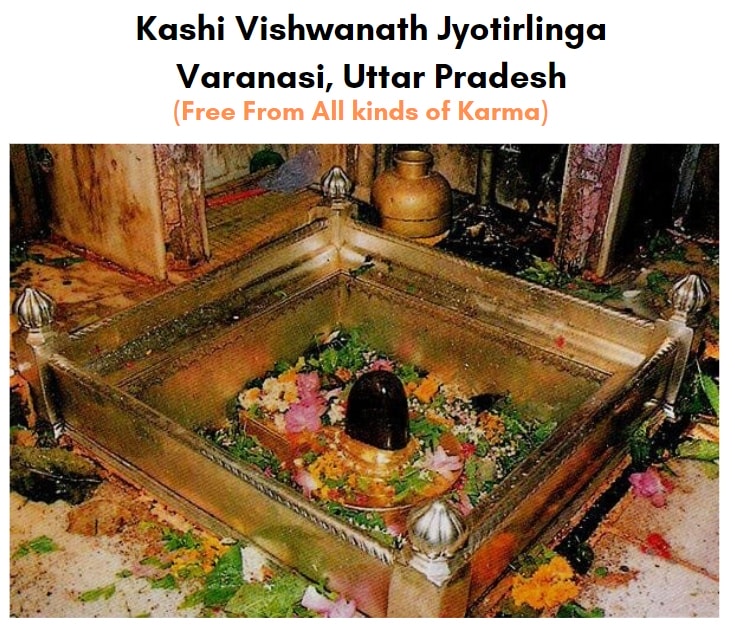
The place Kashi is so famous that people believe that if they die in Kashi they will attain moksha and visiting and staying in Kashi will eliminate all their sins. Also there is a golden spire which is believed to grant the devotees wishes. In olden days, it was to visit Kashi but with present transportation and facilities it is easy now to reach the holy pilgrim spot.
There is tradition when visitors visit this sacred place they bring water for others who could not visit, even sprinkling the water from Kashi is believed to purify the soul. Nearly thousands of devotees visit this site every month and people in old age usually decide to stay in kashi in the hope to cleanse all their sins and go to heaven after death.
Trimbakeshwar Jyotirlinga:
The entire Trimbakeshwar jyotirlinga is built with the black stone and the jyotirlinga here has three faces that represent the three powerful lords Brahma, Vishnu and Shiva. Hence the name Trimbakeshwar is derived, they all are covered with a precious jewelled crown that is dated to the Pandavas era. There are several monasteries of different saints in this temple where you can also find the images of other gods like Krishna, Rama etc.
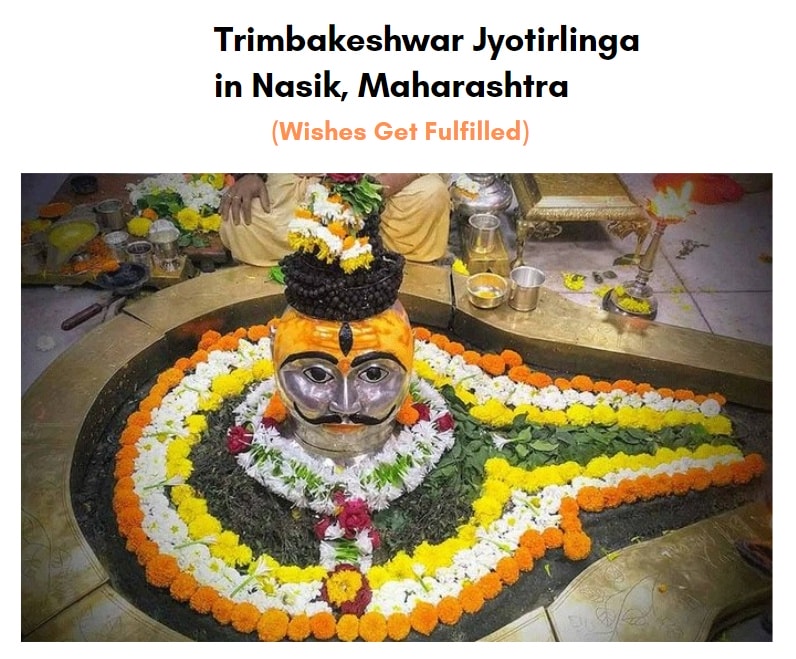
The story of Trimbakeshwar jyotirlinga is said that once there was a severe famine everywhere on the land except in Gautama rishi’s ashram as he was blessed with abundant food grains through his regular prayers. Other rishi’s were jealous and sent a cow into his field and in process of gautama trying to scare the cow it dies. And for the sin of killing cow, rishi prayed to lord shiva to send the precious ganga water to his field, lord shiva in response to his prayer has asked ganga to stay at the rishi’s place.
Devotees here consider the ganga and worship that water also to make the site his adobe, lord shiva has manifested a jyotirlinga which is know called as the Trimbakeshwar Jyotirlinga.
Vaidyanath Jyotirlinga:
The name Vaidyanath means the lord of physicians representing that worshipping the lord shiva at this holy site can cure ailments and grant the healing. The story behind this sacred vaidyanath jyotirlinga is that the ardent devotee of lord shiva, Ravana has constructed the temple and in return to his dedication and worship, lord shiva has granted Ravana a boon of immortality along with the jyotirlinga. Later with his arrogance Ravana tried to uproot the lingam and tried to take it to his kingdom.
During the process lord vishnu has tricked him by disguising as brahmin and managed to break a piece of the lingam which fell at the Deoghar, this is believed to be the Vaidyanath jyotirlinga.

The temple priest carries the rituals throughout the day by invoking the divine presence of lord shiva while millions of devotees watch the rituals and seek the spiritual blessings of the lord. The temple air is filled with chants and spiritual prayers and devotional songs creating a sense of reverence among the devotees that come from across the world from diverse backgrounds and cultures.
Nageshwar Jyotirlinga:
The history of the holy Nageshwar jyothirlinga says that the Adi shankaracharya has laid foundation at kalika peetha here. A massive shivalinga of 25m is present which is made with the sacred Dwarka shila with chakras engraved onto it.
The story behind the Nageshwar temple is that once a demon named Daruka imprisoned the great devotee of lord shiva, supriya. Even after being imprisoned supriya was chanting the lord shiva’s name. Impressed with the devotion lord shiva appeared and killed the demon to save his worshipper, the place where the demon was killed is called as Darukavanam.
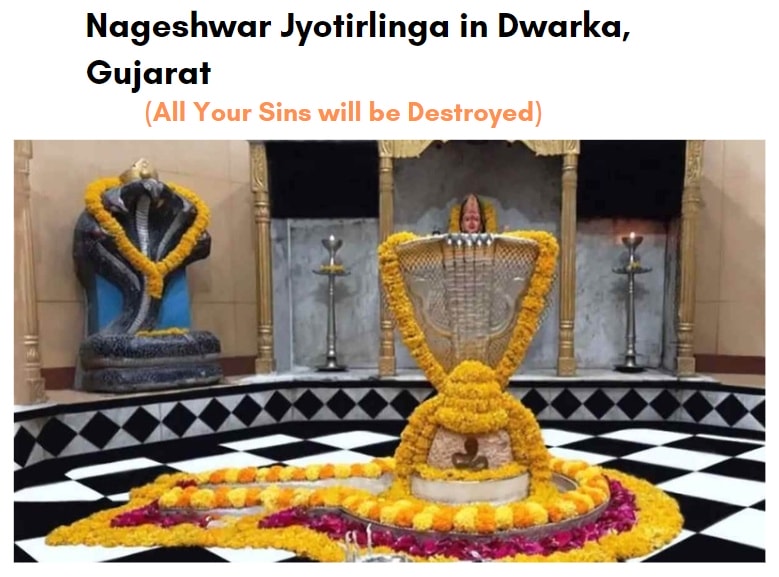
Lord shiva has manifested a shiva linga which is named as Nagnath in order to establish his residence at that site. An interesting fact about the Nageshwar jyotirlinga is that the linga is faced to the south while the temple is faced to the east side.
Once a humble devotee named Namdev stepped onto this hallowed ground. His heart overflowed with love for the Lord, and he chanted Shiva’s name with fervour. But there was a challenge: Namdev was asked not to hide from the divine gaze.
“Show me a direction where the Lord does not exist,” Namdev was challenged. Fearlessly, he chose the south—the mysterious, the uncharted. And lo! As he stood there, he witnessed a miracle. The Nageshwar Linga, too, faced southward, mirroring his devotion.
The temple priests and fellow devotees stood astonished. Was this a cosmic jest? Or a profound lesson? Namdev knew—he had glimpsed the unity of all directions, the omnipresence of the Divine.
Rameshwar jyotirlinga:
The Rameshwar jyothirlinga is in the rameshwaram temple which is built in around 15 acres with gopurams all over the temple. There are 4000 granite pillars in over 4000 feet long corridor which is considered as the longest in the world.
There are many scenic views to look around at Rameshwaram temple apart from the 4000 feet gopurams, you can also witness the 64 water bodies around the island of Rameshwaram, out of which 24 are considered as holy teerthas and bathing in them is believed to cleanse you of your sins.
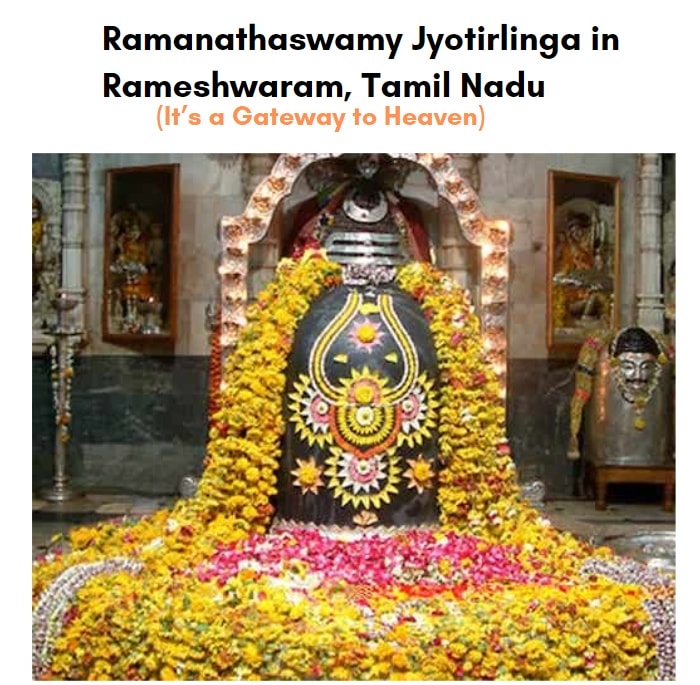
The story of Rameshwar jyotirlinga goes like after Rama defeated Ravana and while coming back from Lanka, Rama offered prayer to lord shiva but there were no sins from lord shiva and then he sent hanuman to bring the linga from mount Kailash, but as hanuman couldn’t bring it on time, goddess Sita has made a linga out of sand and Rama worshipped that linga.
However hanuman was disappointed that Rama has not waited for his arrival, in order to pacify hanuman lord Rama said that the devotees would worship the linga bought by hanuman. So when you visit Rameshwar jyotirlinga you will find two lingas one which is made by sand and the other is the linga bought from Kailash mountain.
Grishneshwar Jyotirlinga:
There are couple of legends associated with Grishneshwar jyotirlinga, one such legends has it that a woman named Kusna is a sincere devotee of lord shiva and she used to pray to the lord by immersing the linga in the tank everyday with her pujas and rituals.
Jealous of her dedication, her husband’s first wife killed Kusuma’s son, even in the immense grief Kusuma kept her faith in the lord and continued her prayers. Pleased with her faith and devotion lord shiva has appeared and bought her dead son back to life. She requested the lord to stay, so lord shiva granted her the wish by manifesting the linga at that site and named it as the Grishneshwar jyotirlinga. At this temple men are required to enter bare-chested.
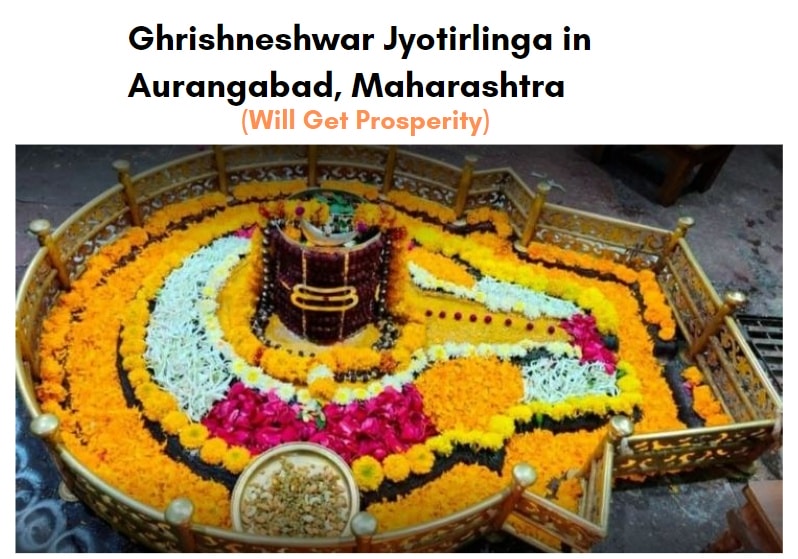
The temple looks glorious with the red rocks composed of a five tier Shikara. At this temple you can see the ten avatars of the lord vishnu that are carved beautifully on the red stone. This jyotirlinga temple is the smallest among the 12 Jyotirlingas. There are many tourist places around this temple. So when you visit the Grishneshwar jyotirlinga, you can also visit Ellora caves and UNESCO heritage sites which are around a km away.
Conclusion:
These are 12 jyotirlingas across the world and each famous for their own historical significance. All the jyotirlingas are considered very sacred and are treated in lord Shiva’s own presence. This belief of the devotees and its historical significance draws millions of visitors annually, who seek the blessing and lord’s spiritual solace.
These holy shrines symbolize the omnipotence of lord shiva by going beyond the geographical boundaries and uniting delivered devotees across the world. As pilgrims start their journey to visit the 12 jyotirlingas, it is said that they undergo a transformative experience spiritually by connecting them more with the inner self, faith. Through several centuries the 12 jyotirlingas stood as the pillars of enlightenment, strength and diving faith and grace fostering a sense of spiritual awakening and devotion among all the devotees who see their divine presence.
This is all you need to know about the 12 jyotirlingas and their significance. Hope you know the story behind all the jyotirlingas and if you want to know in detail about each jyotirlinga, please find it in the above link. In case you are planning to make a trip to any of these jyotirlingas, I hope the individual details can guide you to make your trip more comfortable and fun as you will understand all the scenic location in and around each jyotirlinga temple.




